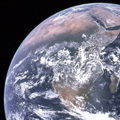« Prev Next »

Nineteenth century fishermen in Peru were keen observers of the sea, and for good reason — their livelihoods depended on it. Well before oceanographers took a profound interest in their area, they knew that sea surface temperatures (SST) along their coast were prone to some idiosyncratic patterns. A recurring coastal warming appeared periodically around Christmas, which they called El Niño or "the boy" after newborn Jesus. El Niño continues to affect Peruvian fishermen today (Figure 1) when it makes its semi-regular appearance every 3–7 years, alternating with its cooler counterpart La Niña. In coining the moniker "El Niño" early Peruvians undoubtedly also recognized its beneficial effects. While the warming of coastal waters banished marine life and made fishing temporarily unproductive, it also brought uncommon rains that greened the coastal deserts and supported bountiful harvests. Thus El Niño years were also called años de abundancia, or years of abundance (Philander 2004).
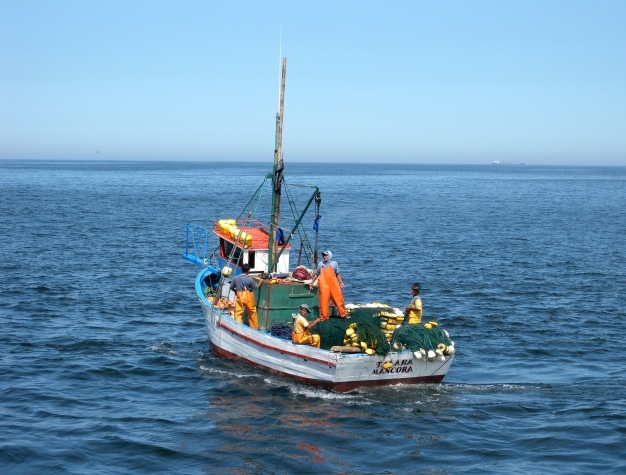
Halfway around the world in India, El Niño years were not so benign. The Great Drought of 1876-78 spread widespread famine and brought death to an estimated 6–10 million people (Davis 2001) (Figure 2). The summer monsoon rains on which crops depended had failed without warning. Famine returned in 1896–97 and 1899–1900, in each case caused or exacerbated by El Niño, although the connection was unknown at the time. As fate would have it, while farmers in Peru enjoyed años de abundancia, those in India were starving to death.

Today the El Niño-Southern Oscillation (ENSO) is firmly established as a major purveyor of unusual and extreme weather on a global scale. Its far-ranging impacts communicated through atmospheric "teleconnections" (Figure 3) include droughts in India, Indonesia, and Australia; floods and mudslides in Peru, Ecuador, and California (but also beneficial rains and snowfall that recharge snowpack and ground aquifers); increased tropical storms in the Pacific, but decreased in the Atlantic; and many others. The impacts of La Niña are generally opposite to those of El Niño, but just as widespread. Indeed few parts of the Earth's environment and ecosystems remain unaffected by ENSO (McPhaden et al. 2006). Not surprisingly, there is keen interest in predicting individual episodes, and still more in anticipating possible long-term shifts that may come with changing climate. To varying degrees, the former is today possible — the latter is not.
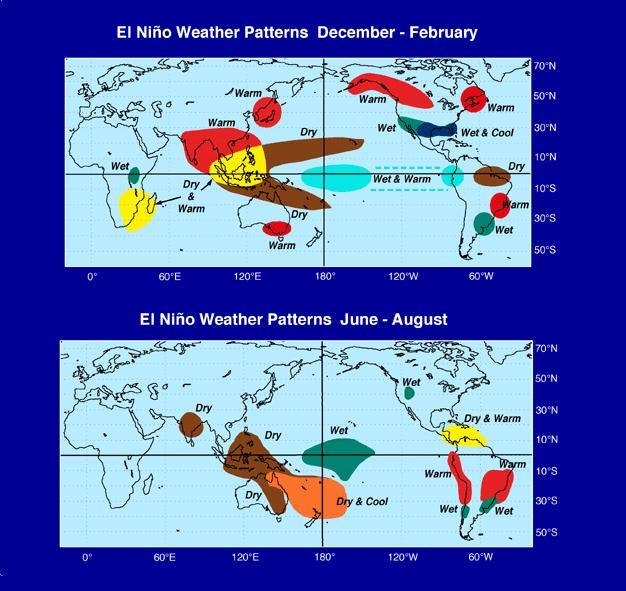
ENSO and the Coupled Ocean-Atmosphere
What lends El Niño and La Niña their power to disrupt climate and human societies on a global scale? The journey of discovery began after the 19th century Indian famines, when Sir Gilbert Walker was dispatched from Cambridge to investigate the causes of Indian monsoon failure. By the 1920s, Walker had discovered the Southern Oscillation, a large-scale seesaw in atmospheric pressure between the eastern and western Pacific. It is defined today as the pressure difference between Tahiti in the southeast Pacific and Darwin, Australia, and is fundamentally linked to El Niño. Yet this connection eluded Walker. Its discovery awaited the work of Jacob Bjerknes, a Norwegian-American meteorologist at UCLA in California. Bjerknes recognized that the Southern Oscillation was the atmospheric counterpart of an oceanic oscillation between a warm (El Niño) and a cool (La Niña) state in the eastern tropical Pacific. More fundamentally, he reasoned that the ocean and atmosphere acted as a coupled system such that changes in one drove changes in the other in a positive (reinforcing) feedback (Bjerknes 1969). This coupled-ocean atmosphere interaction is known as the Bjerknes feedback, and remains the cornerstone of ENSO theory today.
To understand the Bjerknes feedback let's consider the mean state of the equatorial Pacific (Figure 4). A mean difference of about 6°C exists between the cool waters of Ecuador and Peru (23–24°C) in the east and the warm waters of Indonesia (29–30°C) in the west. This zonal (east-west) gradient is at first puzzling because incoming sunlight-the ocean's main source of heat-does not vary with longitude. It can be understood as a consequence of two factors: (1) easterly (east to west) trade winds along the equator, and (2) a shallow thermocline in the east (the thermocline is the sharp thermal boundary separating warm surface from cold deep waters). On the equator the easterly winds drive surface currents from east to west. Warmed by sunlight along their journey, the waters accumulate in the west, forming a thick top layer that keeps the thermocline at depth. The situation is quite different in the east, for reasons that have to do with a seemingly unrelated factor: the Earth's rotation. Moving fluids on a rotating sphere feel the influence of a mysterious but real force known as the Coriolis. Near the equator the Coriolis pulls the westward currents northward in the Northern Hemisphere and southward in the Southern Hemisphere. The net effect is divergent waters on the equator, which are balanced by cooler waters upwelling from below. Because the thermocline and cold waters below it are closer to the surface in the east, upwelling is most effective in cooling the easternmost Pacific. The upwelled waters form an elongated area of cool temperatures extending from South America to the dateline, known as the "cold tongue." The stronger the winds and wind-driven currents, the more vigorous the upwelling, and the more intense the cold tongue.
So the easterly winds explain the zonal SST gradient along the equator, but why are the winds easterly to begin with? Winds blow across pressure gradients from high to low pressure (although the Coriolis force dictates that they do so at an angle) so the question becomes, what causes pressure gradients? The answer is differential heating of the air. While the ocean and land are heated from above by sunlight, the atmosphere is heated from below by surface radiation. Strong heating from below causes low pressure as air is forced to expand and rise. High aloft, the air cools and releases its moisture in convective clouds generating thunderstorms. This is the case in the western Pacific, host of the warmest waters in the world's oceans. It follows that surface winds will blow from prevailing high pressure in the east toward low pressure in the west Pacific. To maintain continuity, rising air in the west returns eastward aloft, descends over the eastern Pacific, and blows back west with the trades (Figure 4). Bjerknes (1969) called this zonal flow the Walker circulation after Sir Gilbert Walker. From the atmosphere's view then, the easterly winds are a consequence of the equatorial SST gradient. But from the ocean's view they are the cause of the gradient by inducing upwelling. This chicken-and-egg argument may seem paradoxical, but it reflects the dynamical adjustment of the coupled ocean-atmosphere to the sum of forces acting on it, mainly pressure gradient forces due to uneven heating and the Coriolis force from Earth's rotation.
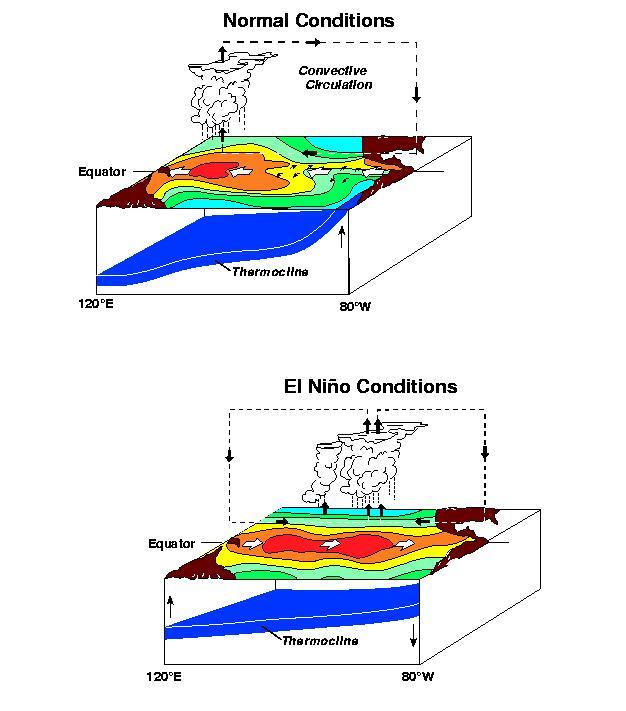
The mean circulation just described reflects the precarious balance between the easterly winds and the temperature gradient that sustains them. El Niño and La Niña are departures from this mean state, which is inherently unstable. The source of the instability is the positive Bjerknes feedback. Even small nudges can be amplified and cause collapse of the circulation, in which the winds, upwelling, and SST gradients, are greatly diminished (El Niño, Figure 4), or a hyperactive state in which they are amplified (La Niña). Suppose for example that the easterly winds subside briefly: upwelling will decrease, SST in the east will rise, the zonal SST gradient will diminish, the winds will weaken further, and the stage will be set for El Niño. The initial stimulus may also appear in the ocean: if the thermocline deepens in the east or the temperature of upwelled waters rises (effects that can originate outside the tropics), upwelling will fail to cool the eastern Pacific and the zonal SST gradient and winds will again weaken.
The underlying cause of ENSO's widespread weather effects is the redistribution of warm equatorial waters, from west to east during El Niño, which alters the pattern of atmospheric heating from below (Figure 4). This results in anomalous pressure gradients (the Southern Oscillation) that force large-scale readjustment of the Walker circulation and tropical atmosphere. Successful prediction can help mitigate global impacts and minimize their socio-economic costs. While predicting the onset of El Niño and La Niña is still a formidable task, once an event is underway its progression can be forecast several months ahead (McPhaden et al. 2006). Forecasts are aided by satellite monitoring of SST and a network of moored buoys that track the thermal structure of the upper ocean. The teleconnection patterns responsible for remote effects are also predictable insofar as temperature departures in Pacific waters follow a standard pattern. Deviations from this pattern can complicate predictions.
Can ENSO Change?
ENSO changes may involve shifts in the mean state of the tropical Pacific, for example in the zonal SST gradient, strength and direction of winds, or depth of the thermocline; or changes in its variability such as frequency, amplitude, duration, or spatial pattern. Another element that may change is the strength and stability of the teleconnections that propagate the ENSO effects remotely (Figure 3), hence also their predictability. There are reasons to believe that all of these elements are susceptible to change. ENSO underwent clear changes during the past 150 years of instrumental observations (Figure 5). It was strong in the late 19th and early 20th centuries, weakened in the mid-20th century, then strengthened again. In the mid-1970s the mean period of ENSO changed from 3 to 5 years, and the eastern Pacific thermocline deepened (Fedorov & Philander 2000). There is further evidence that El Niño (but not La Niña) comprises two distinct types: one centered in the eastern and the other in the central Pacific. The central Pacific El Niño (also called Modoki, or dateline El Niño) has increased in frequency recently (Yeh et al. 2009) although it remains the less common of the two types. Its teleconnections are distinct, and therefore cause different remote effects. It remains unknown whether the recent changes are adjustments to changing background climate, or natural modes of variability.

Will ENSO undergo further change in the future? There are three main avenues to approach this question. The first is through analysis of observations. Unfortunately, the instrumental record (Figure 5) is presently too brief to test hypotheses of long-period ENSO dynamics. One way to lengthen it is to continue collecting data going forward. The obvious practical disadvantage is that changes may occur before we have developed the ability to foresee them. The second avenue is through theory — i.e., from first principles governing ocean-atmosphere dynamics. As a complex non-linear system, ENSO is not well suited to a reductionist approach that distills it into a few fundamental principles. Rather, incorporating complete ENSO physics into a theoretical framework requires elaborate numerical models of the ocean and atmosphere. ENSO theory has advanced significantly (Philander 1990, Wang & Fiedler 2006) and current state-of-the-art models have substantially improved ability to simulate fundamental aspects of the tropical Pacific climate (Guilyardi et al. 2009). Yet, they still face systematic difficulties in representing ENSO variability realistically, and diverge in their 21st century projections (Cane 2005, Guilyardi et al. 2009, Collins et al. 2010) — a sign that long-range ENSO prediction remains elusive and requires further development of models and theoretical understanding. The third available avenue is experimentation. Since it is neither possible nor advisable to conduct willful experiments with the ocean and atmosphere, we must draw upon natural experiments that occurred in the past. This brings us into the realm of paleoclimatology — the study of past climate variations kept by natural geologic or biological recorders. Examples include sediments deposited in the deep sea, and on lakebeds, coral skeletons, and tree rings.
El Niño of the Past
Despite the incomplete status of past ENSO studies, three key results stand out as important. The first concerns conditions during the Medieval Warm Period (900–1300 CE), a time of warm climate in the Northern Hemisphere, and possibly globally. During this time, coral evidence suggests a cooler mean state of the tropical Pacific resembling La Niña (Cobb et al. 2003). Although preliminary, this finding is supported by evidence of widespread droughts in western North America consistent with La Niña (Cook et al. 2004). The second result concerns the mid-Holocene period broadly bounded between 4 and 8 thousand years ago. Corals and marine sediments alike indicate reduced or possibly absent El Niño within this interval and a more La Niña-like mean state (Tudhope et al. 2001, McGregor & Gagan 2004, Koutavas et al. 2006). The mechanisms behind either of these two anomalous conditions remain unclear, but likely involved variations in the sun's brightness and Earth's orbital geometry (Emile-Geay et al. 2007). The third important result concerns an older geologic period, the Pliocene, ~3–5 million years ago. At that time the equatorial Pacific lacked a zonal SST gradient and has been compared to a permanent El Niño (Fedorov et al. 2006). The underlying cause may have been a deeper tropical thermocline, preventing cool waters from upwelling to the surface. Without cool upwelling or SST gradients the Bjerknes feedback would have been inactive and ENSO would have been inhibited. Yet, surprising recent evidence from Pliocene corals suggests that El Niño events were likely present (Watanabe et al. 2011). This unexpected finding reinforces the notion that our understanding is incomplete and continues to grow and be challenged. The examples above are but brief case studies illustrating varying ENSO behavior in earth's long geologic past. Their main message is that ENSO can indeed undergo fundamental and lasting change.
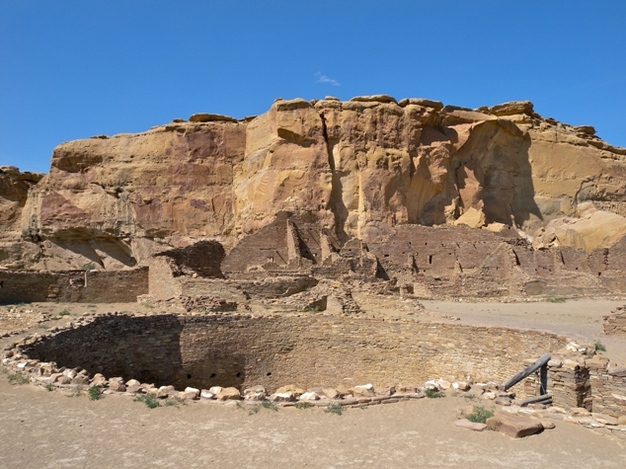
From Peru to India and around the world, El Niño and La Niña have deeply affected people's lives through history (Glantz 2001). As our understanding grows, we begin to appreciate that ENSO may have also played a crucial role in the fate of entire societies. A not too distant example lies in the notable medieval droughts of the American West (Cook et al. 2004). Their connection with La Niña is tentative but plausible. These droughts have been implicated in the abandonment of hundreds of settlements in the southwest United States, previously occupied continuously by Anasazi Indians for centuries. The ceremonial ruins of Chaco Canyon in New Mexico (Figure 6) and cliff dwellings of Mesa Verde in Colorado, among many others, bear witness to a vibrant network of communities dispersed across a wide region, subsisting largely on farming of corn and squash (Diamond 2005). When the landscape became increasingly arid, exacerbating other environmental and social stresses, they ceased to be viable. As one looks upon these enigmatic ruins today and ponders the forces that caused them to stand lifeless, one has to wonder: what does El Niño hold for future societies?
References and Recommended Reading
Bjerknes, J. Atmospheric teleconnections from the equatorial Pacific. Monthly Weather Review 97, 163-172 (1969).
Cane, M. A. The evolution of El Niño, past and future. Earth and Planetary Science Letters 230, 227-240 (2005).
Cobb, K. M. et al. El Niño/Southern Oscillation and tropical Pacific climate during the last millennium. Nature 424, 271-276 (2003).
Collins, M. et al. The impact of global warming on the tropical Pacific Ocean and El Niño. Nature Geoscience 3, 391-397 (2010).
Cook, E. R. et al. Long term aridity changes in the western United States. Science 306, 1015-1018 (2004).
D'Arrigo, R. et al. On the variability of ENSO over the past six centuries. Geophysical Research Letters 32, L03711 (2005).
Davis, M. Late Victorian Holocausts: El Niño Famines and the Making of the Third World. London, UK and New York, NY: Verso Books, 2001.
Diamond, J. Collapse: How Societies Choose to Fail or Succeed. London, UK: Penguin Books, 2005.
Emile-Geay, J. et al. El Niño as a mediator of the solar influence on climate. Paleoceanography 22, PA3210 (2007).
Fedorov, A. V. & Philander, S. G. Is El Niño changing? Science 288, 1997-2002 (2000).
Fedorov, A. V. et al. The Pliocene paradox (Mechanisms for a permanent El Niño). Science 312, 1485-1489 (2006).
Glantz, M. H. Currents of Change: Impacts of El Niño and La Niña on Climate and Society. Cambridge, UK: Cambridge University Press, 2001.
Guilyardi, E. et al. Understanding El Niño in ocean-atmosphere general circulation models: Progress and challenges. Bulletin of the American Meteorological Society 90, 325-340 (2009).
Koutavas, A. et al. Mid-Holocene El Niño-Southern Oscillation (ENSO) attenuation revealed by individual foraminifera in eastern tropical Pacific sediments. Geology 34, 993-996 (2006).
McGregor, H. V. & Gagan, M. K. Western Pacific coral δ18O records of anomalous Holocene variability in the El Niño-Southern Oscillation. Geophysical Research Letters 31, L11204 (2004).
McPhaden, M. J., Zebiak, S. E. & Glantz, M. H. ENSO as an integrating concept in Earth science. Science 314, 1740-1745 (2006).
Moy, C. M. et al. Variability of El Niño-Southern Oscillation activity at millennial timescales during the Holocene epoch. Nature 420, 162-165 (2002).
Philander, S. G. El Niño, La Niña, and the Southern Oscillation. San Diego, CA: Academic Press, 1990.
Philander, S. G. Our Affair with El Niño: How We Transformed an Enchanting Peruvian Current into a Global Climate Hazard. Princeton, NJ: Princeton University Press, 2004.
Tudhope, A. W. et al. Variability in the El Niño-Southern Oscillation through a glacial-interglacial cycle. Science 291, 1511-1517 (2001).
Wang, C. & Fiedler, P. C. ENSO variability and the eastern tropical Pacific: A review. Progress in Oceanography 69, 239-266 (2006).
Watanabe, T. et al. Permanent El Niño during the Pliocene warm period not supported by coral evidence. Nature 471, 209-211 (2011).
Yeh, S.-W. et al. El Niño in a changing climate. Nature 461, 511-515 (2009).









